The Further Adventures of Cija the Goddess: Jane Gaskell’s Atlan Saga, Part II
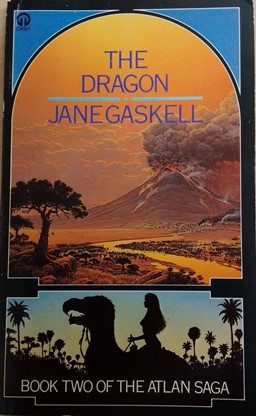
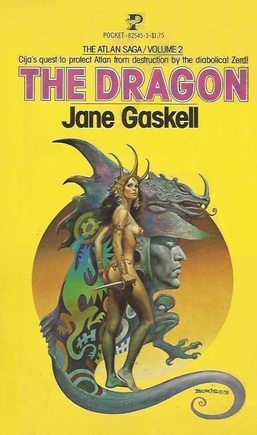
A Tale of Two Books
Back in December I wrote about Jane Gaskell’s classic 1960’s fantasy novel The Serpent. We pick up the story with a book that’s been published here and there as the second in the series, The Dragon.
Calling this Book Two is a bit of a misnomer, as certain publishers have included this slim volume as part of The Serpent. For our purposes (and because the Orbit Futura series I have at hand separated them into two distinct volumes), I am referring to it as a separate book. My copy weighs in at 206 pages of small print, continuing the exploits of our reluctant heroine, the young goddess Cija.
The two-book split is preferable in at least one sense, in that it acts as a visual divide that emphasizes events in the tale.
You see, our heroine is growing up. From her secluded upbringing we saw her blunder from point to point in The Serpent. She was naïve and had a skewed sense of the real world, having had only books — chiefly romances and sagas — to help her form opinions in her youth. One got the distinct impression that life happened to Cija.
That kind of inherent fatalism starts to change in The Dragon.
Of course, there’s another advantage to having two editions – awesome cover art. I would love to know who painted the covers of the Orbit Futura series, but the artist isn’t credited. One needs a magnifying glass to appreciate it fully, but the cover of The Dragon is not only captivating, in my humble opinion, but also shows that the artist has done his homework, as it depicts events within the book almost as accurately as the author’s fine prose.
Boris Vallejo’s covers for The Atlan cycle (click to embiggen)
The Adventure so Far
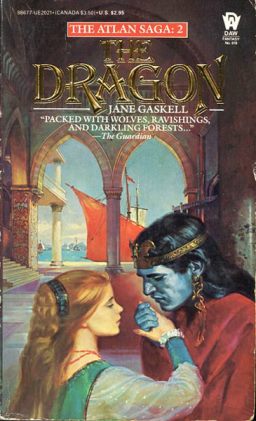
The Serpent left off at the point where Cija finally escaped from both her abusive lover Smahil and General Zerd, whom the southerners have taken to calling The Dragon, and in so doing exited the capital city of the Southern Empire. Stowed away on a river boat, she finds her freedom cut short when the boat docks at a nearby temple complex and she is discovered.
But this time luck is on her side. A very influential priest of the new religion whom she had met once before takes charge of her and, in a rapid turn of events, she is revealed as the goddess Cija and becomes an overnight celebrity.
The temple complex where Cija ends up also serves as the luxury retreat for many wealthy nobles who’ve eschewed the southern capital, and the two armies (Northern and Southern) are also barracked there. As you’d expect for nobles with too much money and time on their hands, this lot fits the usual debauched boredom paradigm. (At the time this book was written, this was probably less of a cliché.)
Not all is as it seems however, and Cija starts to discover some disturbing facts about the new religion and its priests. Although she is fêted by the locals and even has songs written about her, soon enough the novelty wears off. With the arrival of Zerd and his entourage, his wife – a princess from the forests whom he wed as a political expediency in The Serpent – becomes the new object of the bored nobles’ attention. This comes as a bit of a relief to Cija, whom we learn by now is not at all comfortable with celebrity.
Towards the end of The Serpent, Cija started to experience nightmares which return and become progressively worse. Eventually the priest who rescued her from the river boat takes her under his wing and they form a somewhat hesitant bond, as he helps her with her nightmares and tries to divine the cause.
All good things come to an end. Cija, who is growing up and starting to take control of her life — and in so doing starting to make her own decisions — finds herself out of favor after she becomes embroiled in some skulduggery through a random act of kindness.
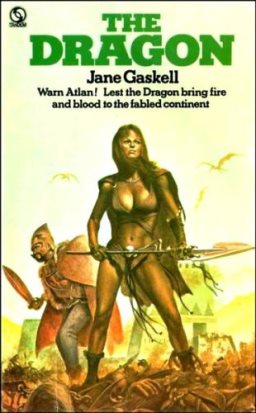
Her swift fall finds her charged with treason, for which she expects to be executed, but she is rescued and spirited away by an unexpected benefactor. Although Cija now seems to be more in charge of her life, she’s still the victim and also the benefactress of events. Thrust back together with Zerd, she is finally free of the immediate threat of the southern death warrant, but not free of danger.
It gradually becomes incumbent on Zerd not only to save her, but to take care of her wellbeing. A new kind of friendship emerges between them, and the half lizard general she originally set out to hate and kill starts to reveal more of himself. The relationship blossoms as Zerd starts to appreciate Cija’s resilience and personality. She is elevated in his opinion from an interesting slave he nicknamed Flosshair to something more worthwhile, more desirable.
The two are separated again by the inevitable reckoning between north and southern armies. After a short time with some allies, one of whom was the benefactor of the kindness that resulted in the accusation of treason, she becomes a witness to an immense battle when the two armies finally stop playing and have a real go at each other. With a volcano erupting in the background and subsequent earthquakes, the role player in me was slavering at all the great ideas I gleaned.
The primary outcome of the battle and volcanic activity is chaos, during which Cija is reunited with her beloved Ums the riding bird. She finds her way out of the battlefield and away to the coast, where she intends to make her way to the fabled overseas land of Atlan and warn them of the impending invasion. (The whole point of Zerd marching his army to the south was to ally with the southerners and build a massive invasion force). The latter part of the book deals with her entrance to Atlan and subsequent events.
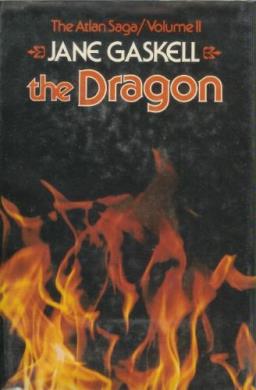
I really enjoyed this book. I thought it was silly as a child, but I discovered I was very happy I re-read it! The coming of age aspect of the tale only became apparent towards the end, but on reflection it was always there.
Jane Gaskell’s marvelously descriptive prose is reason enough to read The Serpent and The Dragon; mix in a believable heroine and a colorful cast of characters, and the book becomes a definite success. Story aside, any person wishing to find ideas and descriptors to flesh out their fantasy adventures would be remiss not to take the opportunity to read these books.
One small gripe I do have is towards the end, there is a bit of a jump in events. I found myself backtracking to see if I had inadvertently skipped some pages. Without other versions to compare to, I cannot say if this was intentionally edited out or perhaps a mistake by the publisher. On the whole this is a minor gripe and shouldn’t discourage potential readers.
Oh, there is also a bit of an unexpected revelation regarding one of the main protagonists, but I won’t spoil the fun by describing it.
Finally, with a brief nod to Black Gate‘s Scott Taylor — my favorite cover. One has to appreciate the attractiveness of the Tandem cover by Dave Pether (above right), and of course the beautiful cover Boris Vallejo produced for the Pocket Books edition.
My problem with those two, however, is that neither depicts Cija in a manner faithful to the story. Thus my favorite remains the Orbit Futura cover by an untraceable (so far) artist.
The Orbit Future editions were also, as I recall, the first proper fantasy book I ever bought for myself.
The Complete Series
Other Jane Gaskell
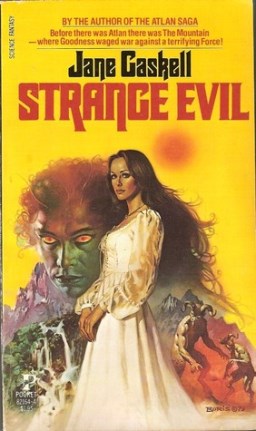
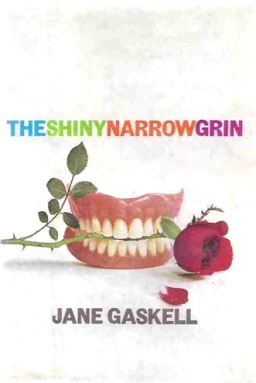
While The Atlan Saga is the only series Gaskell has produced, she has also written a number of standalone novels, both fantasy as well as mainstream.
Her first novel was Strange Evil. It was published when she was only 14 years old, fitting her into a very select group of authors which include the likes of Mary Shelly, Stephen Crane and S.E. Hinton. Since then we have seen some other big names in the genre writing published when quite young. Christopher Paolini (Eragon) and Terry Pratchett (The Carpet People) spring to mind, but at the time when Strange Evil was published, this was quite an achievement!
Strange Evil is about a young woman who is abducted into an alien land of Faerie, a twist common enough trope which is explored in relatively fresh way by the author. By appearances this book has been out of print for a years, so actually locating a copy may be difficult, or perhaps as easy as visiting a local charity shop…
Perhaps one of Ms. Gaskell’s most unique books deals with the concept of a sympathetic vampire. I can already hear the howls of derision as I type this — and harsh comparisons to Anne Rice– but hold that thought. The Shiny Narrow Grin was published in 1964! Up until then, as best I can tell, vampires had remained a thing from the crypt along the lines of Dracula, with no or little deviation from their raison d’être.
By comparison, Ms. Rice’s masterpiece Interview With the Vampire was published in 1976. I wonder if The Shiny Narrow Grin may even have inspired some of Anne Rice’s works. What it does evidence is Jane Gaskell’s forward thinking in terms of where genre fiction was heading. I may need Goth Chick to weigh in here to either ratify or refute my claims.
As a parting comment, and a nod from one of the current big names in the genre — a quote from China Miéville with regards Strange Evil:
The book was written when Gaskell was 14, and though it suffers from all the flaws her youth would lead you to expect, it is a staggering achievement. A fraught fairyland full of sexuality, and containing the most extraordinary baddy in fiction.
A fitting remark methinks. I will cover a few more of Ms. Gaskell’s other, lesser known works in future articles.
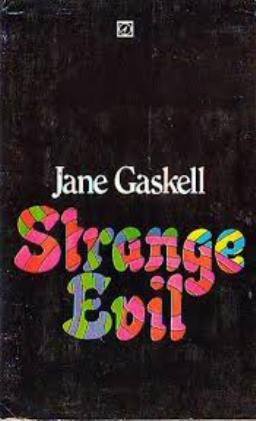 |
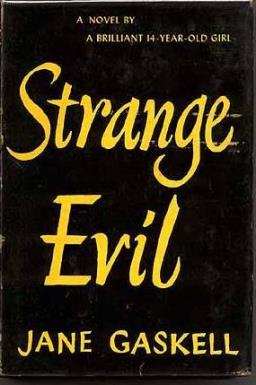 |
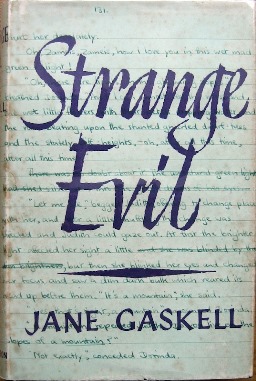 |
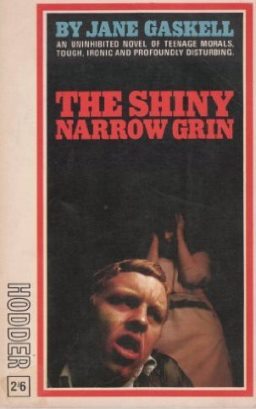 |
| Arrow | Dutton | Huchinson | Hodder Paperback |
Bibliography
Tony Den previous article for Black Gate was Prehistoric Fantasy from the Days Before the Earth had a Moon: Jane Gaskell’s Atlan Saga, Part I. His personal website RuneQuest.orc is busy undergoing a slow migration to Word Press.
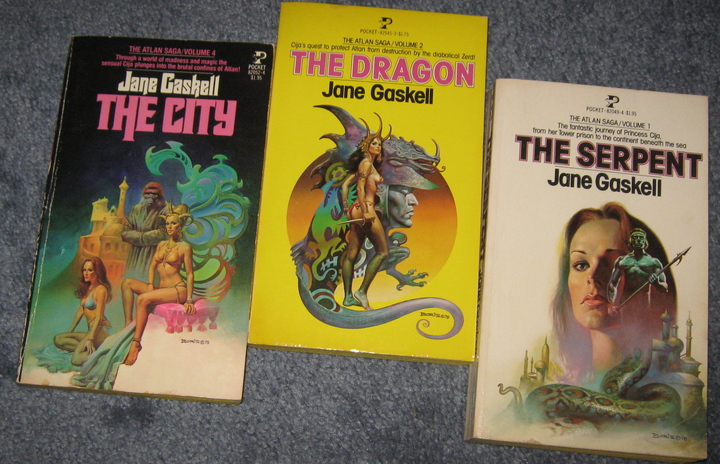
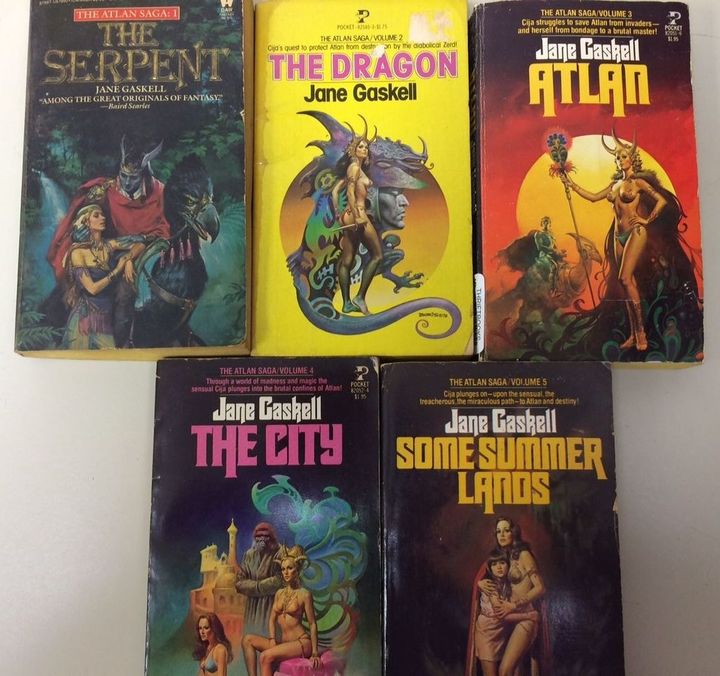
I have (but haven’t read yet) Strange Evil, and another one, King’s Daughter, that I think may be a very loose prequel to the Atlan books? It’s another prehistoric civilizations story, at least.
Fascinating to hear about Shiny Narrow Grin.
Indeed Joe, what we would do without the Internet. My plan is to touch on Kings Daughter in my next instalment. Actually busy trolling Alibrius trying to find someone with it cheap, so far loads of hits.
Good to see the Atlan Saga getting some attention. I first learned of it from Baird Searles’s indispensable A Reader’s Guide to Fantasy, back in the 1980s. And in those pre-Internet days of yore, I too was trolling the used bookstores to find the various volumes. In consequence, no two of my copies are from the same print run, though three of them have Boris Vallejo covers, and I do have both versions of The Serpent, full (with the Frazetta cover) and split-in-two (with the Pether).
Glad someone out there is interested Eugene. Sometimes i think a lot of authors from this era are becoming forgotten, too recent to be of the early great pulp names, too old to fit in with modern contemporaries.
I agree a lot of authors from this period (which I’d broadly define as anything from the 1950s up to maybe as late as the 1980s) are in danger of being forgotten for a couple of reasons: Their work is still in copyright, but it may or may not be easy to find out who actually controls the work; and most books from that era don’t exist in a format that would be easily converted to eBook without extensive time & effort. A shame, really.
Tony Den, Joe H.,
I would consider Joy Chant to be one of those nearly forgotten authors from the pre-D&D fantasy “boom”. Or Evangeline Walton. Vera Chapman. Avram Davidson (at least as far as his fantasy works; he was a member of SAGA, Lin Carter’s swords & sorcery writers group).